Hi All! 🤗
Every day, we browse the Web and scroll our timelines. And every day, we find even more interesting websites, blog posts, articles, videos, podcasts, and other insights and ideas that we want to document, preserve, and share. The most obvious way to save something of interest still is to create a good old bookmark. And there are many different ways to do this.
First of all, you could save your bookmarks in your browser. While there is generally nothing wrong about that and I know many people for whom this solution works well, it can still be a bit cumbersome to organize your bookmarks this way, especially if you want to also add tags or notes. You could also save your favorites in a read-it-later app like Pocket or Omnivore. Or, you could save and manage your favorite links with bookmarking services like Raindrop, Pinboard, or the open-source tool LinkAce.
But all those solutions are missing an important bit: the social aspect of bookmarking, also known as sharing links with others. Once upon a system time, sites like Zootool, StumbleUpon, or Delicious not only let us save bookmarks, but also made it possible to discover new, interesting links that others had saved. This social aspect, this way of curating and sharing a collection of links that others can follow, has become a lost art.
Today, social media sites have made it seductively convenient to quickly post links that will immediately be rewarded with views, likes, and reposts. As a result, many of us seem to instinctively drop most of the interesting links we find right into the timelines of the many – oh, so many! – social media silos. With the recent revival of personal websites and blogs, however, a lot of people are rediscovering a more thoughtful and persistent alternative: sharing links on their personal websites.
Sharing links on your own site indeed has several advantages:
You own them. Bookmarking services come and go. On your own site, you can build up an archive of links that will survive any turmoil.
You can look at them again. Because that’s the reason you are saving a bookmark in the first place, right?
You can share them. If you add a links section to your website, people will be able to discover new and relevant content through someone they know and trust. No algorithm can beat that.
You can provide an RSS feed. This makes it easier for people to always get your latest links automatically. And, as mentioned in the last issue about RSS, this also helps with the discoverability of all our sites and posts.
You can cross-post your links. Using tools like IFTTT, Zapier, n8n, or Echo, you could take the RSS feed of your links section, for example, and automatically cross-post new links to Mastodon, LinkedIn, and BlueSky (via Micro.blog) – or also backup your links on other services like Pinboard or Notion.
You can send Webmentions and notify the sites you bookmarked that you did so.
You can turn your links into a weekly roundup post or a little newsletter for everyone who does not visit your site regularly but might enjoy a regular bunch of links.
You can create a solution that is as sophisticated as you want it to be. You can add (colorful) tags, notes, a search, filters, screenshots – and whatever else you come up with and are adventurous enough to build.
If you are athirst for some inspiration or want to start following the link blogs of others, take a look at the many sites people shared on Mastodon. (Thank you! 🤗) Ana is sharing bookmarks on her site, as well. So do Nicolas, Marc, and Hidde, who recently also wrote about his approach. Andy is collecting links as well now and also shared a run-down of his links setup. One of my personal favorites is Jeremy’s links section, just because he constantly adds new and interesting links including a short but succinct comment. And, to end the roundup with a shameless plug, my own site has a links section as well.
In whatever way you decide to implement your collection of links, pay attention to two things: first, try to make posting links regularly a habit. This works best when the links section of your site is your primary place where you collect bookmarks. And secondly, make adding and publishing bookmarks as easy as possible, for example by adding a bookmarklet. The easier adding a link is, the more likely it is that you will stick to it.
How do you currently save ans share your links? Do you already have a links section on your site? Or are you planning to do so? Hit reply and let me know.
And now, let’s find and share some links! I’ll start:
Links
Here’s another mixed bag of links. Please let me know how you like them! And if you can think of someone who would enjoy reading this newsletter today, feel free to forward along.
The internet used to be ✨fun✨
Every time Rachel J. Kwon sat down to write “some kind of Important Thinkpiece™ on the glory days of the early internet”, she found another, better piece that someone else has already written. So she decided to create a collection of articles that answer the question “Why have a personal website?” with “Because it’s fun, and the internet used to be fun.”
The internet used to be fun
Personal website manifestos
Your site, your home, your web
“We lost platforms for expression and connection that were convenient, but which we never owned. What we have, is an opportunity to rethink how we present ourselves online, how we connect and at what pace we choose to do so. We can still write, we can still post, we can still share and we can still talk to one another.” — Cory Dransfeldt

Your site, your home, your web • Cory Dransfeldt
A brief, perhaps unoriginal, plea to have fun sharing and building on the web.
100 things you can do on your personal website
When James Gallagher has free time, he often finds himself asking: what can I do with my website today? That’s why he started writing a list of 100 things you can do on your personal website that covers a wide range of wonderful ideas.
100 things you can do on your personal website | James' Coffee Blog
Creating Your Own Website
Over at 32-Bit Cafe, Xandra has written a really useful introduction for anyone who wants to get started with their site. A post full of great advice, especially for beginners.
👉 https://32bit.cafe/cyowebsite/
🎉 Personal Site of the Week 🎉 Robin Rendle == https://robinrendle.com
Robin Rendle is a designer and writer based in San Francisco. As a staff-writer for CSS-Tricks, he used to write about all things related to web design and development. These days, he is writing a fantastic newsletter about the past, present, and future of CSS called The Cascade. His site, which comes in three different color schemes, is a carefully considered interplay of Kris Sowersby’s Söhne typeface, woodcut and metal engravings, and occasional pixel illustrations. Robin regularly posts notes on his site and the essays section includes not only a lot of thoughtful writing and storytelling, but many of the essays even got their own individual layout.
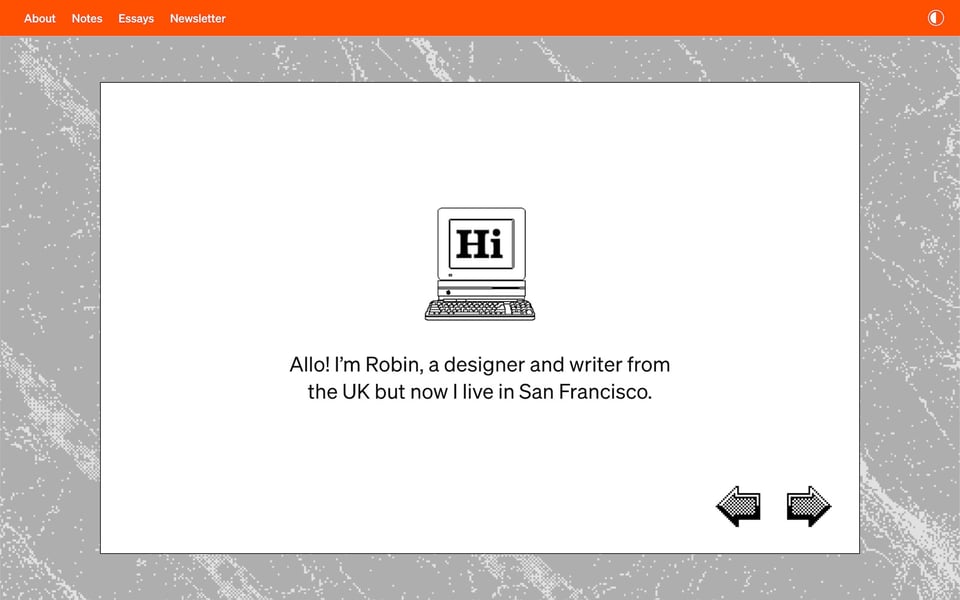
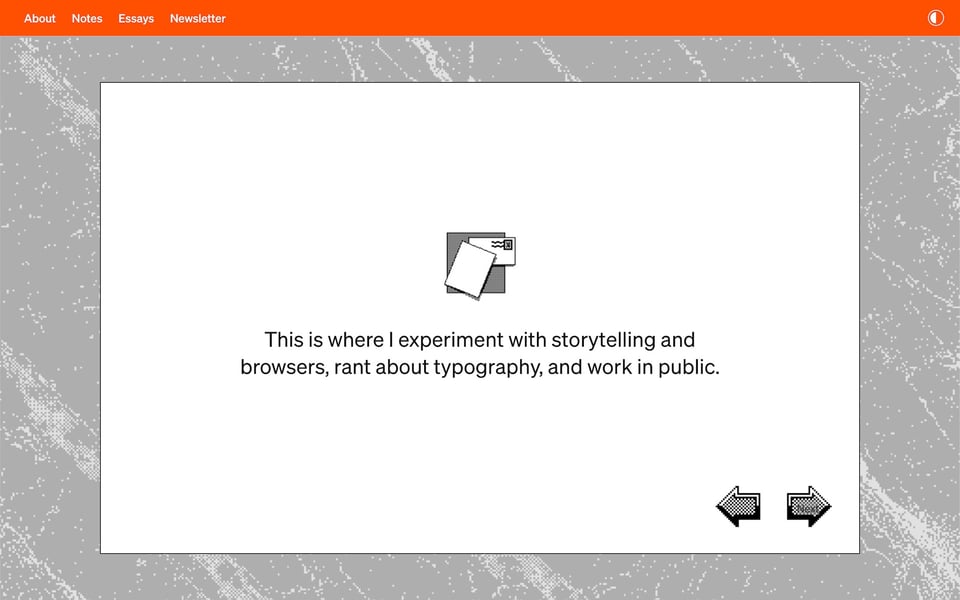
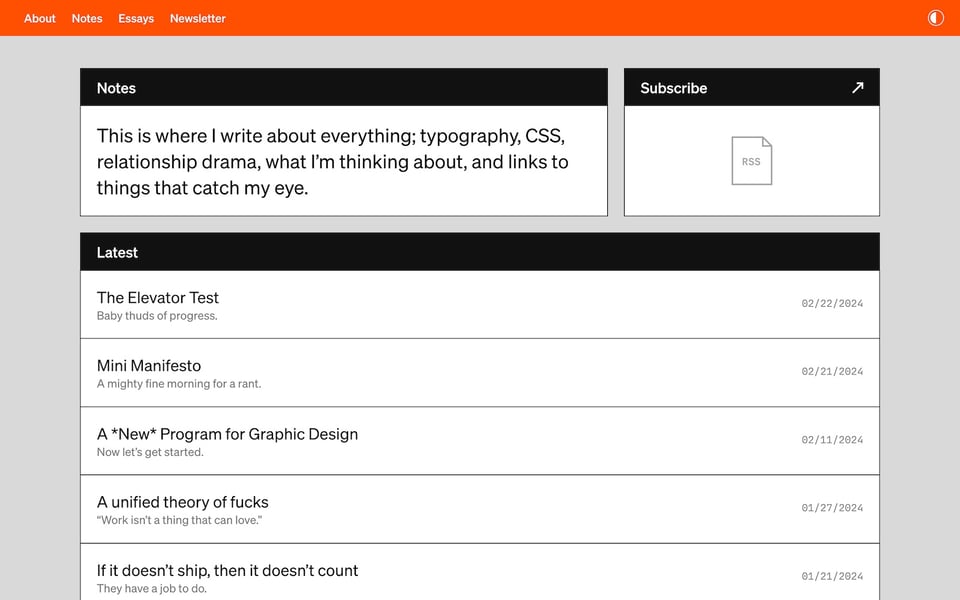
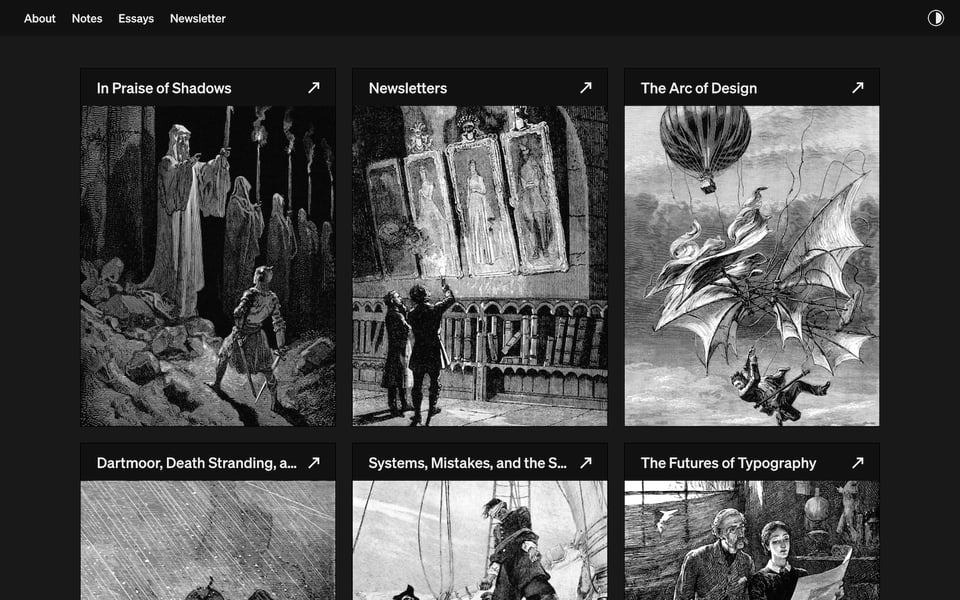
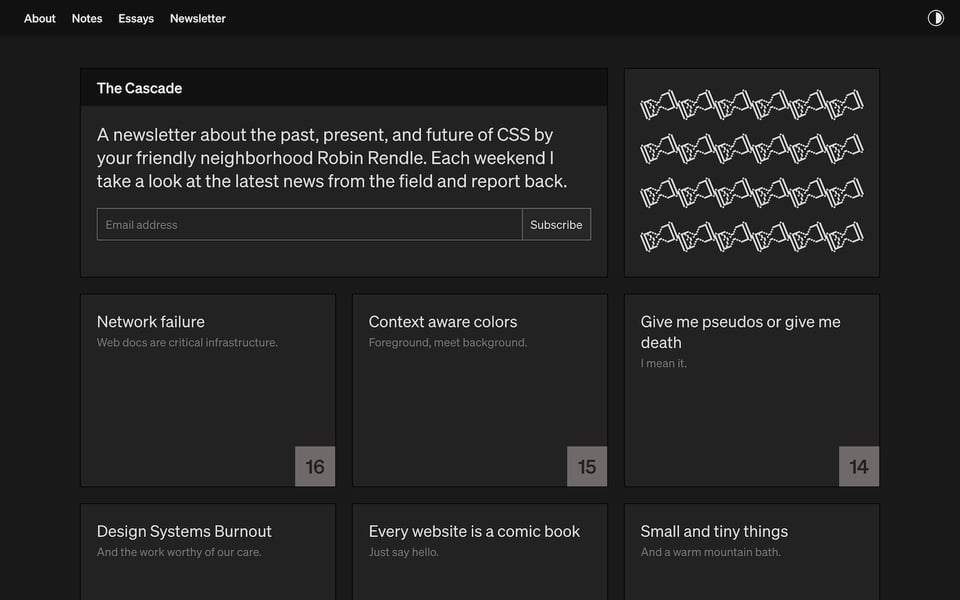
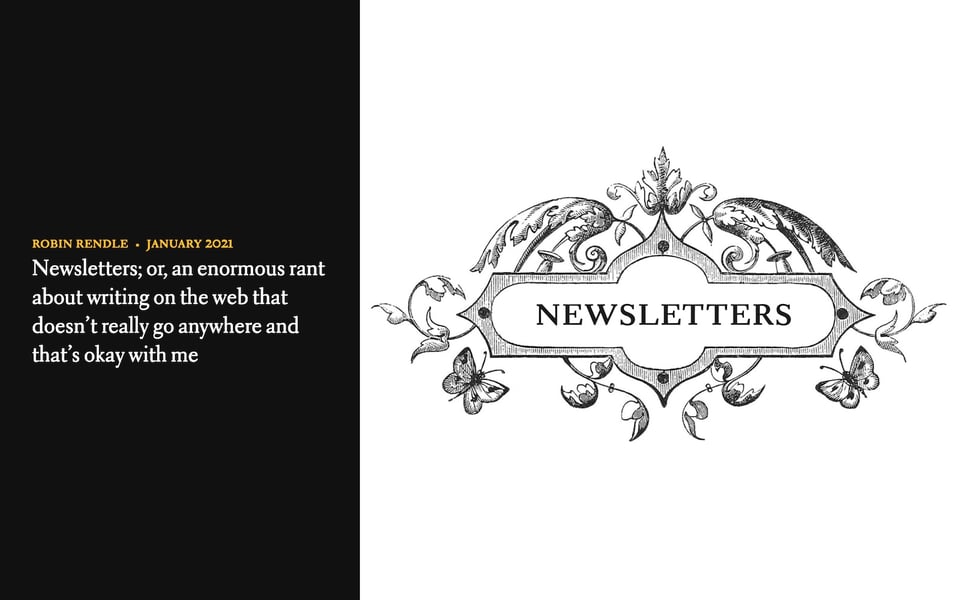
And that’s it for today. How did you like this issue? Which one of the links was your favorite? What do you want more or less of? Do you have any other suggestions on how to improve this newsletter? Hit reply now and let me know.
Cheers! ☀️
– Matthias
